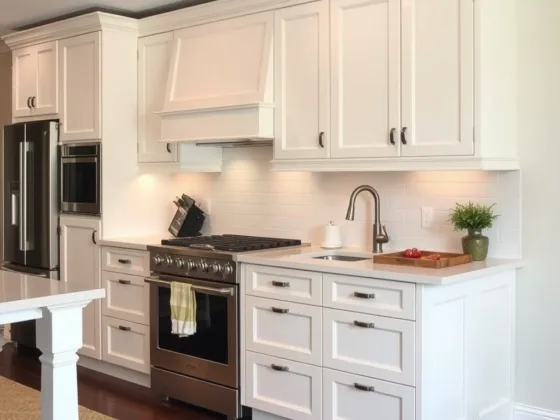Table of Contents Show
Many home extensions melbourne take a significant deal of effort and time (as well as money); but, there are many methods to make the process quick and straightforward.
You can have a smooth house remodeling process if you have a well-thought-out strategy down.
It’s critical to move procedurally through your home remodeling operation for it to be successful.

Alternatively, you can hire a home remodeling professional to manage the whole activity for you when relocating—engaging a professional undoubtedly comes with financial implications.
Nonetheless, you can save a lot of money by taking control of the process.
This post will give you 13 guidelines to follow when renovating your home.
Step 1: Arrange for Your Renovation
Renovation professionals recommend that you begin by planning your project. The following are the two most essential elements of prepping:
- Time frame.
- Financial plan.
With a deadline, you can be sure that your job will be finished on the scheduled time and save on money that can go to waste on additional days or needless labor.
Likewise, a budget will assist you in determining the amount of money you require for the remodeling.
Far from that, it would be best for you to establish a budget for several sectors from the onset.
It guarantees that you do not spend all of your money in one area while neglecting other critical areas.
A good plan will also allow you to distinguish areas of your house that need complete restoration and those that require partial remodeling or are suitable for DIY fixes.
Step 2: Assess Repairs and Improvements
After you have a complete plan, consider everything that requires fixing or repairing. It could be the lock to your main entrance, your bathroom shower, or even some light fittings, among other things.
From the outset of the restoration, fix weak walls or supporting beams and any salinity or water concerns with a leak detection company.
If you disregard them, your whole makeover may wind up being a waste of time and money.
Also, be sure that your structure’s foundation is strong. Foundational repairs like joists, beams, and pillars are primary to renovation undertakings.
Read Also:
Step 3: Begin the Demolition Process
During this process, you remove components that are no longer needed out of the way before renovation begins.
After that, it’s the waste disposal stage. Consider completely demolishing any structural barriers for you to avoid having to redo demolition.
Even better, rent a trash container when deconstructing to avoid cleaning afterward. Be cautious when demolishing areas that will require rebuilding from the ground up.
Step 4: Structuring and Building
When you’re demolishing, start structuring and building. This phase is critical when considering a structural extension, such as a mezzanine conversion or the construction of a new room.
It’d be helpful to note that you need to install beams underneath when working upstairs to handle the extra load.
Structuring and building also include installing new entrances, removing existing ones, adding window panes, and enlarging windows.
Compile a list of all the new structures you wish to include while planning.
Step 5: Plumbing, Ductwork, And Electrical Work
Ducting, plumbing, and electrical work begin in this stage. This stage is ideal for installing an air conditioning system and a central heating system.
If your home doesn’t already have one, it will be less expensive if done during this time.
Once you identify a reputable HVAC firm, you should be good to go. Anyway, new buildings will undoubtedly need plumbing and electrical work.
For a comprehensive examination and fittings for your home interior and exterior, pick a plumber like a Fairfield Ohio plumbing company and an electrician who are both qualified.
Step 6: Replace, Install, Or Paint Windows
If you’ve recently expanded your windows or wish to replace them, then it’s the right time to do so.
You’ll be halfway through your house remodeling when the demolition ends and new wall construction begins.
Before proceeding, double-check to confirm if your builder has correctly installed, replaced, or painted your windows.
Step 7: Insulate the Space
Most of the primary remodeling work ends at step 7 as soon as your walls and ceiling are ready for insulation.
Ensure that you don’t neglect the insulation of your attic. The insulation process is swift; it can be a day or two. Meanwhile, have your drywall contractors on standby.
Step 8: Proceed to Drywall and Framing
Closing up your walls involves framing and partitioning. Even so, hanging, sanding, and mudding your walls, mainly those just constructed, are a part of that process.
It’s a good idea to schedule another inspection with your electrician so that they can finish any pending work.
Here, workers are now prepared to hang plasterboard sheets and apply adhesives. Allow your walls to rest once the workers finish for the compound to dry.
You should also note that walls may need a second coat to get the best, most smooth finish.
Step 9: Complete the Carpentry
In this stage, hiring a professional carpenter can ensure that you have the woodwork you want.
Carpenters carry out improvements like door trimming, molding, and window installations during this period.
Additionally, you can install a bookshelf, a wooden cabinet, an entrance piece, among other things.
Step 10: Decorate the Interior and Exterior with Paint and Wallpaper
Put up wallpaper and decorate the interior with paint. Although this is necessary for the inside, you should also consider painting the outside for a polished look. Besides, it improves the appearance and value of your home’s exterior.
Step 11: Lay Down the Flooring
Lay the flooring of your preference. You may choose between trendy laminate flooring or classic wooden floors.
Nevertheless, tiling is still the best choice. You should pay special attention to flooring by ensuring that you have the highest-quality material affordable to you.
For interior renovations, flooring should be final on your must-do list to prevent any harm to your flooring throughout the restoration procedure.
Step 12: Take Care of The Outside Work
Outside work starts once the inside makeover is complete. From there, you can focus on exterior features like swimming pools, outdoor kitchens, patios, and so forth.
Ensure that installations and repairs are completed by contractors as quickly as feasible in this stage.
Step 13: Take A Final Look. And You’re Finished!
Find out anything you’d put off for the last minute and have it fixed, repaired, or installed. If you find anything amiss, have it set too.









